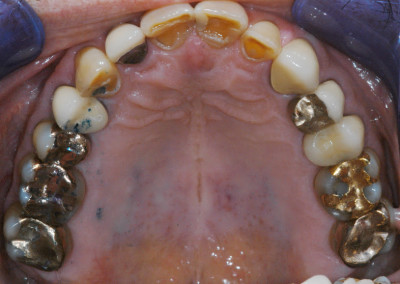The most facinating group of patients to study occlusion is the generation of 70+ who saved and restored the dentition. The patient locked his pterygoid, deep masseter, trapezius and sternocleidomastoid, all left side. The first visit taught me how far muscles can adapt in a contracted state for decades until they have no stretch. It took a half hour of muscle releasing procedures, just to get him to open enough to make a full time lower resting splint. He wore the splint 24/7, except while eating. Two weeks later he could open with good range of motion.

The Habitual Force Pattern on the computer was present at age 15 and remained for his entire life as tooth #27 worked against the left lateral pole of the condyle, for every chew over his lifetime. In today’s technology we could predict this outcome at age 25. The left maxilla versus the mandible formed a wedge in the envelope of function. As the left condyle changed shape over the years, the heavy force concentrated to the posterior left dentition. The muscle continued to adapt. However, the crowns and bones held strong over the lifetime of chewing.
DIAGNOSTIC POSSIBILITIES
Please expand and look at the shape of the left condyle. The right condyle functioned like a ball and socket and chewed with a vertical force. The left condyle head and fossa is a beautiful example of a “hinge” off center in growth. The diagnosis was locked jaw with severe muscle cramps.
FUTURE CONSIDERATIONS…
This patient will require a sleep splint to discourage night time clinching and a limited equilibration to change the envelope of function. Please visit “Cases” to see what the future treatment was.






